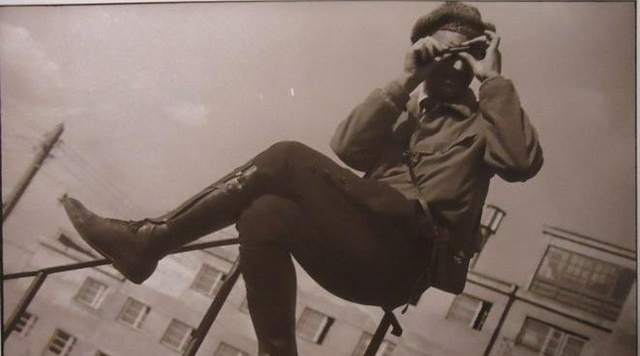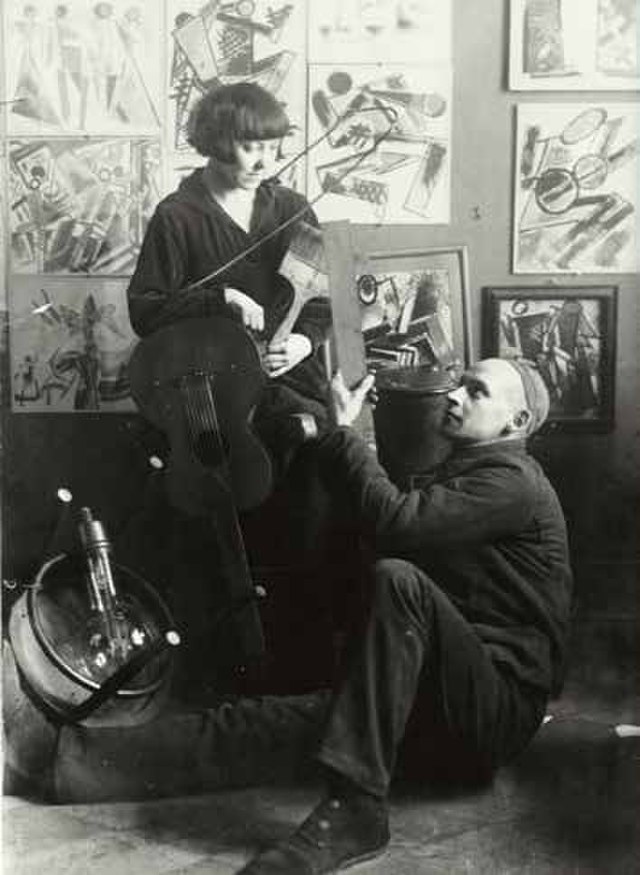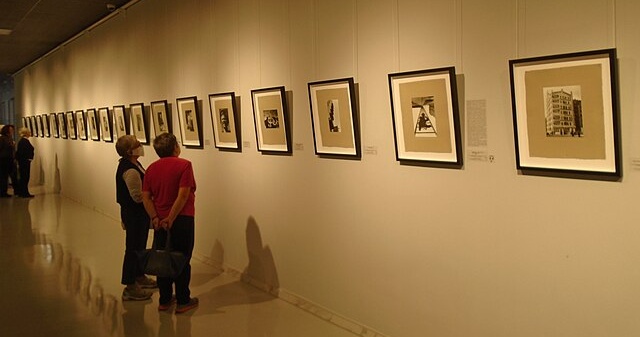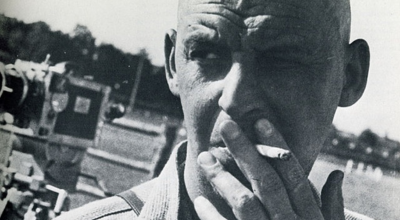Aleksandr Rodchenko: Overview
Born in Saint Petersburg, Russia, in 1891, Aleksandr Rodchenko emerged as a pivotal force in the Constructivist movement, advocating for art’s integration into daily life and its application in industrial and graphic design. His commitment to experimentation and utility in art marked a departure from traditional aesthetics and propelled him into the vanguard of Russian avant-garde artists.

Biography
Rodchenko’s early life was marked by a conventional artistic education at the Kazan School of Fine Arts and later at the Stroganov Institute in Moscow. However, the 1917 Russian Revolution ignited a radical shift in his outlook, aligning his work with the revolutionary ethos and the Constructivist movement, which sought to abolish the traditional artistic canon in favor of functional art.
Key Artistic Phases

Early Experimentation
Initially influenced by Futurism and Cubism, Rodchenko’s early work is characterized by dynamic abstract compositions, which gradually evolved towards geometric abstraction and Constructivism. His participation in the “0,10” exhibition in 1915 alongside Kazimir Malevich marked a significant moment in his career, signaling his move towards non-objective art.
Constructivism and Productivism
By the early 1920s, Rodchenko had fully embraced Constructivism, focusing on the construction of objects in space and their practical use in society. His work during this period, including spatial constructions, design for worker’s clubs, and advertising posters, underscored his belief in the artist as an engineer of society.
Photography and Graphic Design
In the late 1920s, Rodchenko turned to photography and graphic design, seeing these mediums as vital tools for communication in the new social order. His innovative use of angles and montage in photography, along with his bold typographic designs, had a profound impact on the development of visual communication.
Influence and Art Movements
Rodchenko’s work cannot be viewed in isolation from the broader art movements of his time. His transition from painting to industrial design and photography mirrored the Constructivist ethos of integrating art into everyday life. Furthermore, his involvement with Productivism, which emphasized the role of art in industrial production, highlighted his commitment to the social utility of art.
Aleksandr Rodchenko’s Legacy
Rodchenko’s legacy is multifaceted, influencing not only the realm of visual arts but also graphic design, photography, and even modern advertising. His experimental approach and innovative techniques paved the way for future generations of artists and designers, cementing his status as a pioneering figure in modern art.

Most Famous Works of Aleksandr Rodchenko
Among Rodchenko’s most renowned works are his spatial constructions, such as “Hanging Spatial Construction No. 12,” which exemplify his innovative approach to form and material. His poster designs, particularly those for the Lengiz Publishing House, and his photographic series, such as “The Stairs,” remain iconic examples of his groundbreaking visual language.
In conclusion, Aleksandr Rodchenko’s contributions to art and design were instrumental in shaping the course of modern art. His relentless pursuit of innovation, combined with his commitment to the social utility of art, not only reflected the revolutionary spirit of his time but also established a legacy that continues to inspire and challenge contemporary artists and designers.
References
- Rodchenko, A. (1925). The Line. Moscow: Lengiz Publishing.
- Lavrentiev, A. (1996). Alexander Rodchenko: Photography 1924-1954. Cologne: König.
- Tupitsyn, M. (2009). Rodchenko and Popova: Defining Constructivism. London: Tate Publishing.
- Milner, J. (1990). Rodchenko: Design. London: Thames and Hudson.

